It's green black walnut season. I don't know how people figured out you could use unripe walnuts in cooking, but I'm sure glad they did, and after you try making fermented green walnut molasses recipe, I think you will be too, even if you don't like the taste of black walnuts cracked from the shell.
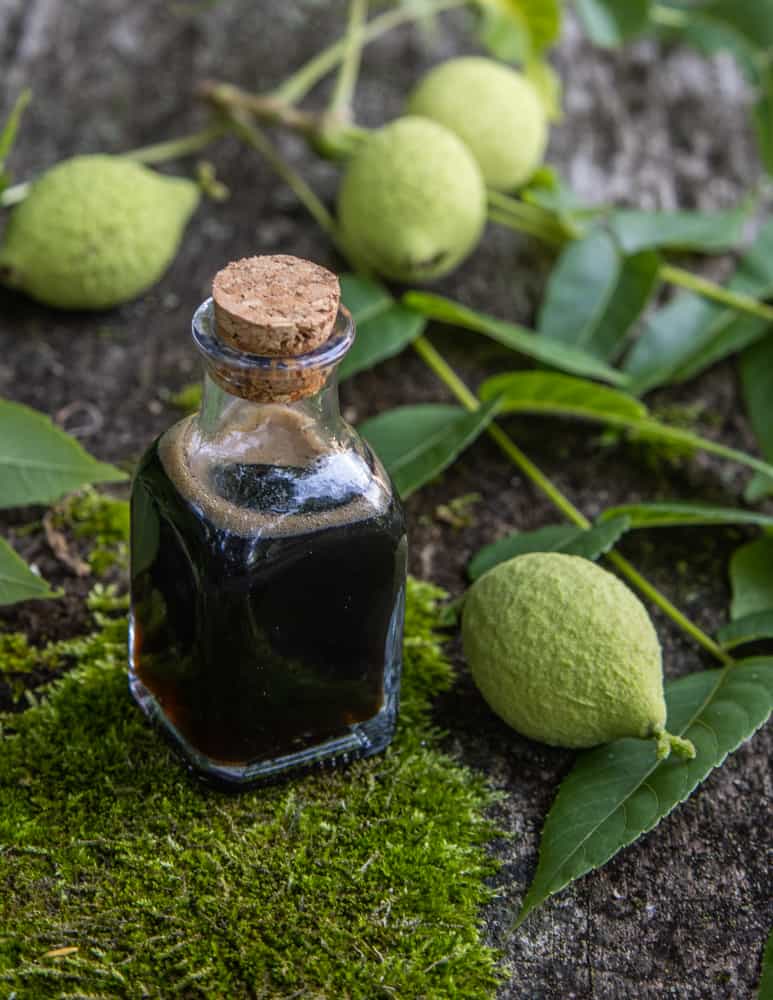
Unripe black walnuts are pretty well known in the wild food community, and I think It's a pretty good bet that's mostly due to the popularity of Nocino, the Italian black walnut liquor (Vin de Noix is the French cousin that includes red wine in the maceration, and I actually prefer it to nocino. The recipe for my Vin de Noix is in my book).
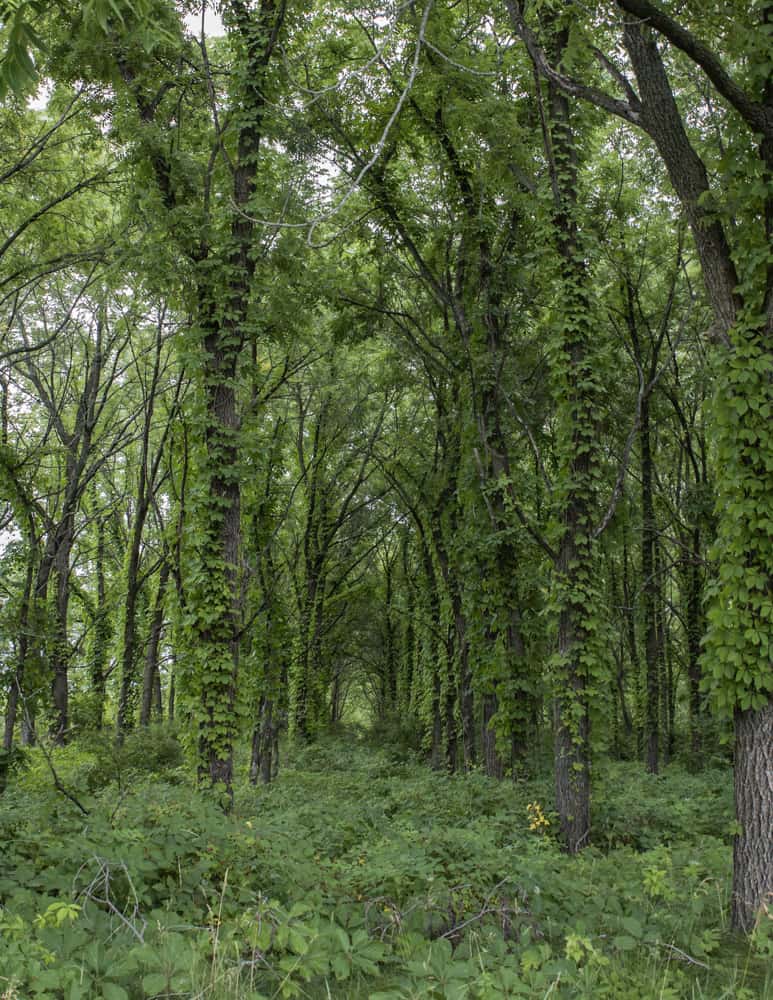
In order to really appreciate the green walnut honey, it's useful to understand what things made with unripe walnuts typically taste like.
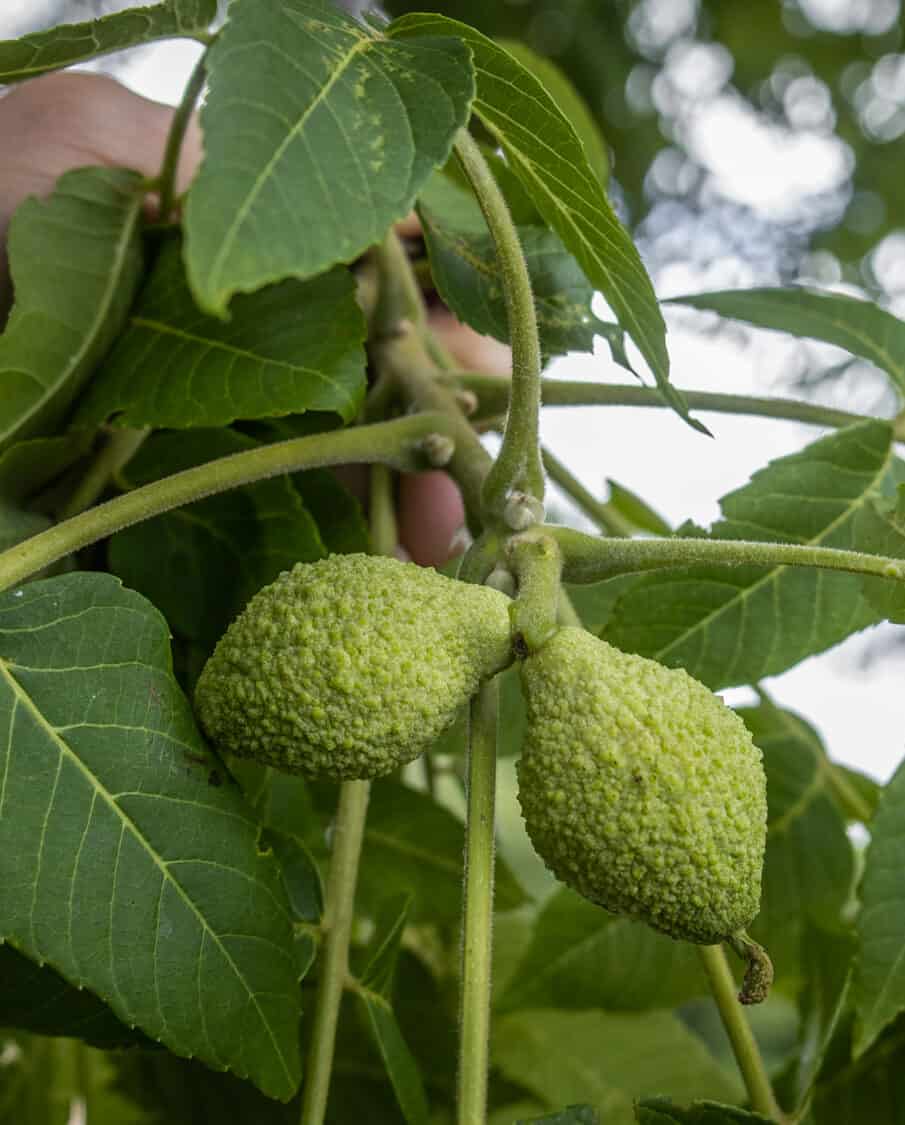
For both Vin de Noix and Nocino, the process goes like this: cut some green walnuts in half, then add them to a mixture of alcohol and spices, allow it to macerate (sit/marinate) for 30 days, then strain, mix with a sweetener, jar, and age to allow the tannins to soften, which takes a long time-6 months at the very least. Saying that the tannins are an obstacle is an understatement.
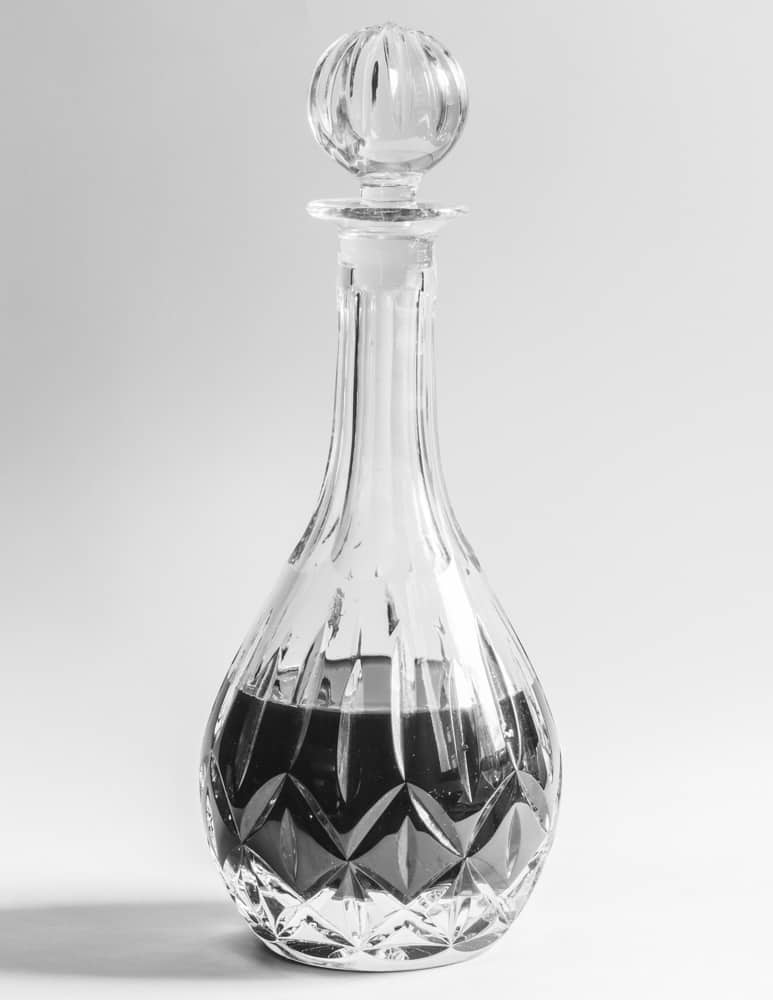
After you crack open a bottle of either walnut liquor, you'll have a reasonably mellow tipple. Nocino is firmly in black licorice-Jägermeister territory, Vin de Noix more of a sweet vermouth. But, as anyone who has handled an unripe black walnut knows, black licorice or Jägermeister couldn't be farther from what the young nuts smell like.
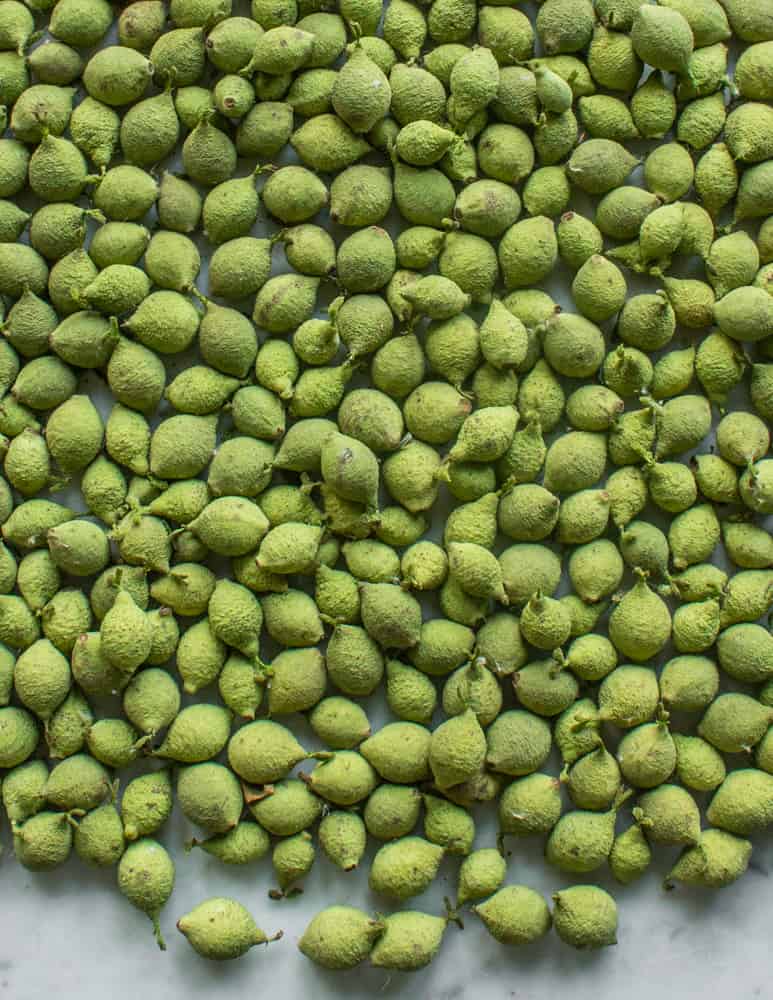
Pluck an unripe black walnut from a tree, or even pick one from the ground the tree has rejected (I usually avoid rejected green nuts for culinary purposes as they may be degraded on the inside) and the first thing you'll notice is an strong, toe-curling aroma of green citrus peels. I've smelled a lot of interesting things over the years, but the smell of the green nuts is one by far one of my all-time favorite scents.
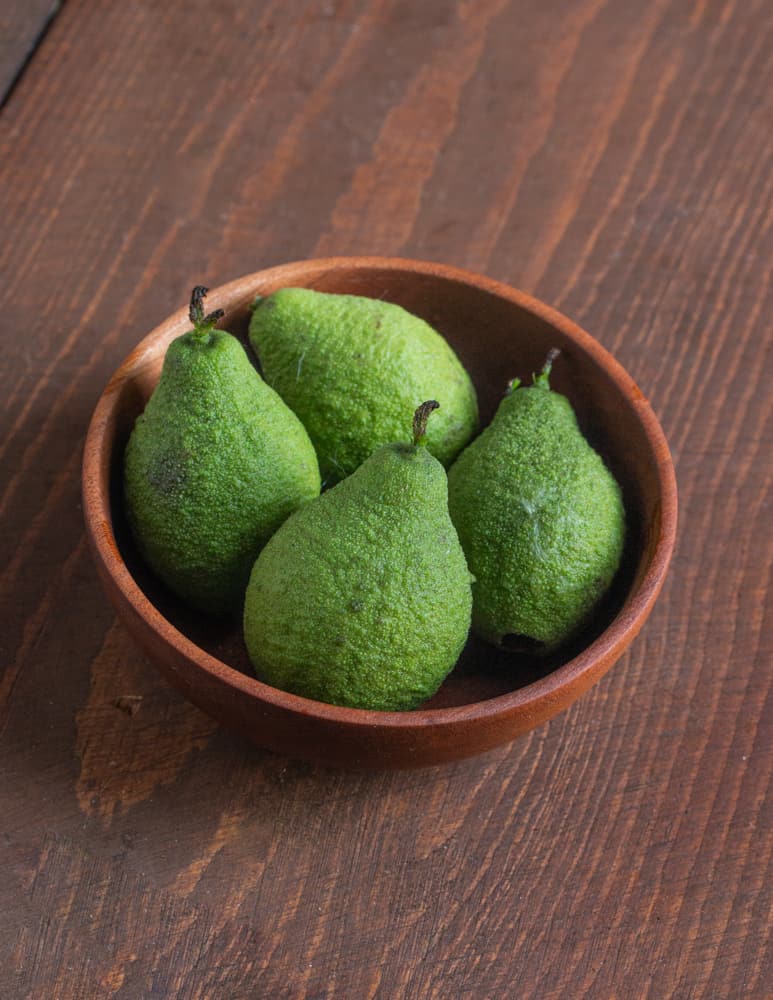
Now, I like Nocino, and I probably like Vin de Noix a little more, but I would be lying if I said that every time I open a bottle I'm not a tiny bit disappointed that the exciting aroma of citrus so rich in the green nuts isn't noticeable at all.
I don't know why the aroma changes after a long sleep in alcohol, but it does, and for years I've been trying to figure out a way, any way at all, to capture the scent of the fresh nuts.
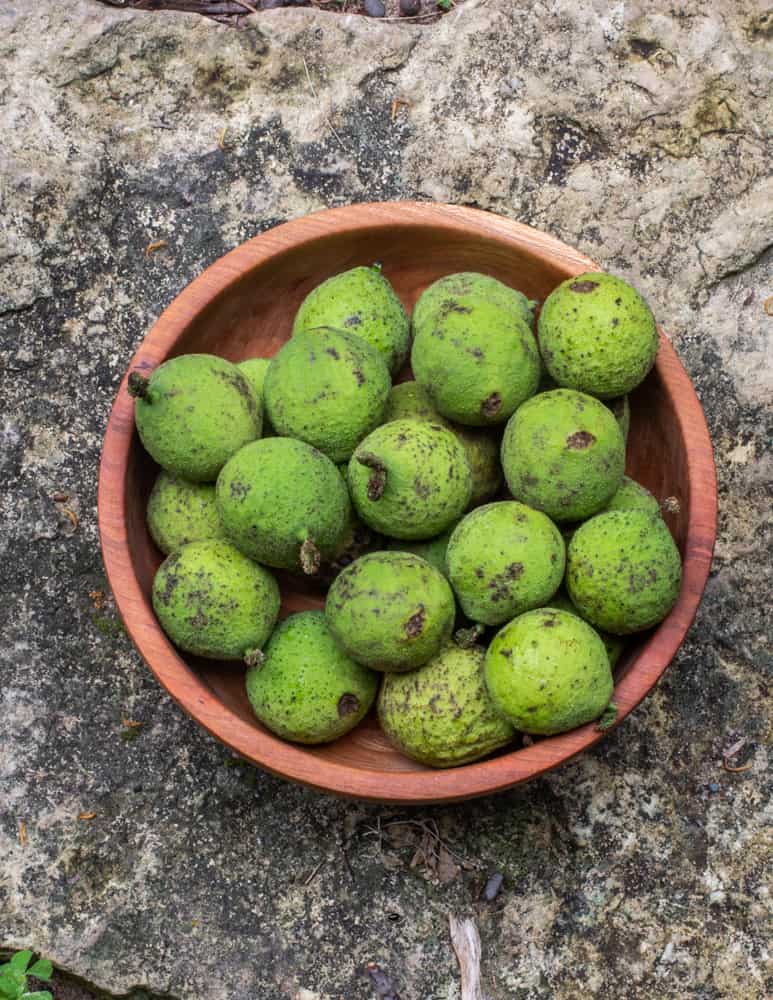
Story goes that a few years ago I was reading an old book, and, unfortunately, for the life of me I now can't remember what it was. I think it was from Ireland, or the U.K., but I could be wrong. Either way, in the preserves section, like many old books I've read from the 18-1900's (Housekeeping in Old Virginia being a great one) there were a number of preparations calling for green black walnuts. One of them was "Green Walnut Syrup". I made a note of the name in a file, and forgot about it for a few years.
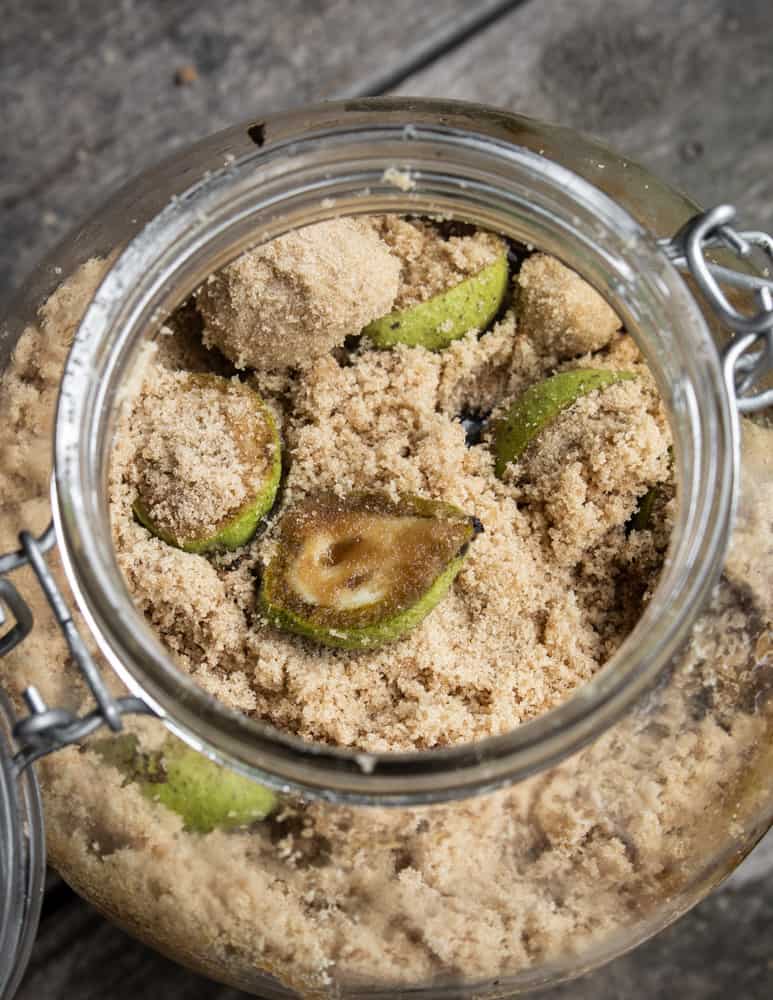
Woodsy Flavor, reduced tannins
I didn't leave any notes on how the original syrup was made, but I have syrup macerations down to a science after making mugolio from every unripe part of every species of conifer tree part I can find in my area. If you're not familiar, naturally fermented syrups made from pine cones are a show-stopper, partly because they give you the unique aroma specific to the conifer species used, without the often terribly strong, astringent aftertaste you would get from chewing on a raw pine cone (side note, unripe cones of Pinus siberica and Abies balsamea are so mild you could almost munch on them raw as a snack).
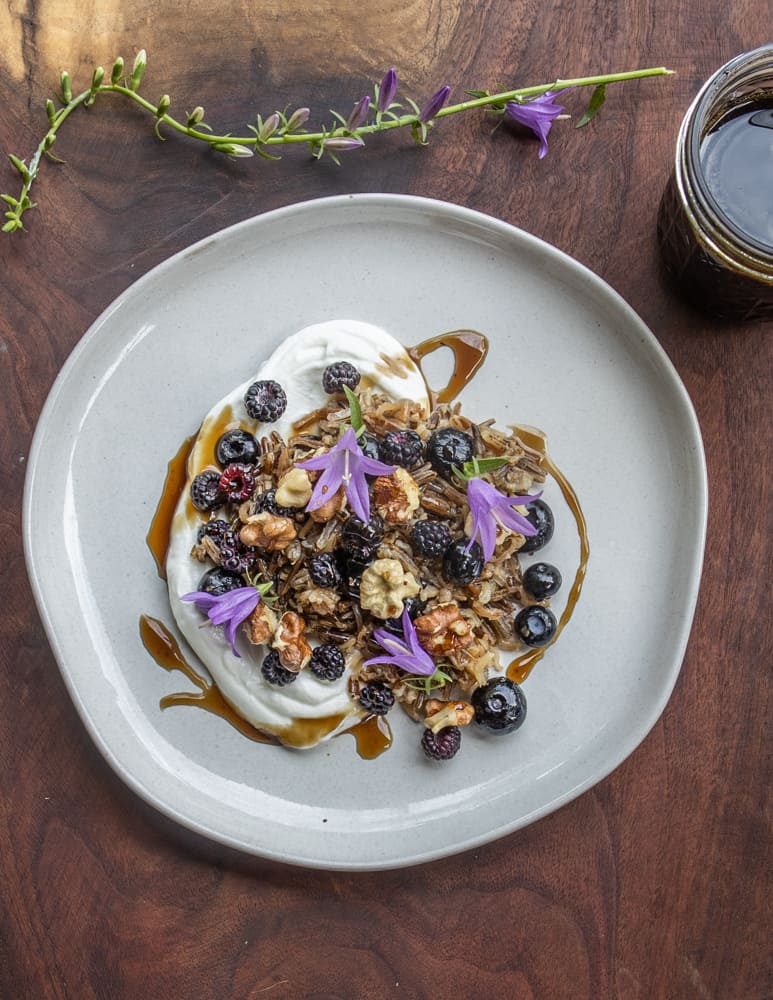
Knowing how incredibly tannic green black walnuts are, I had a hunch that using the same proportions of sugar to unripe black walnuts that I use with pine cones and spruce tips to make mugolio might create a similar product: a thick, non-tannic black walnut syrup, hopefully with a whiff of the citrus aroma I'd been yearning to bottle up and contain since the first time I smelled it.
The finished product will have the taste of green citrus at first, but will mellow with time and develop into something all it's own. The big takeaway of this process, is that this is a way to extract black walnut flavor without having to age out the tannins, and that is pretty darn cool, even if the citrus aroma I've always dreamed of capturing mellows over time. That being said, there will be some tannins in the finished product, but it's nowhere near something like nocino that takes months and months to relax.
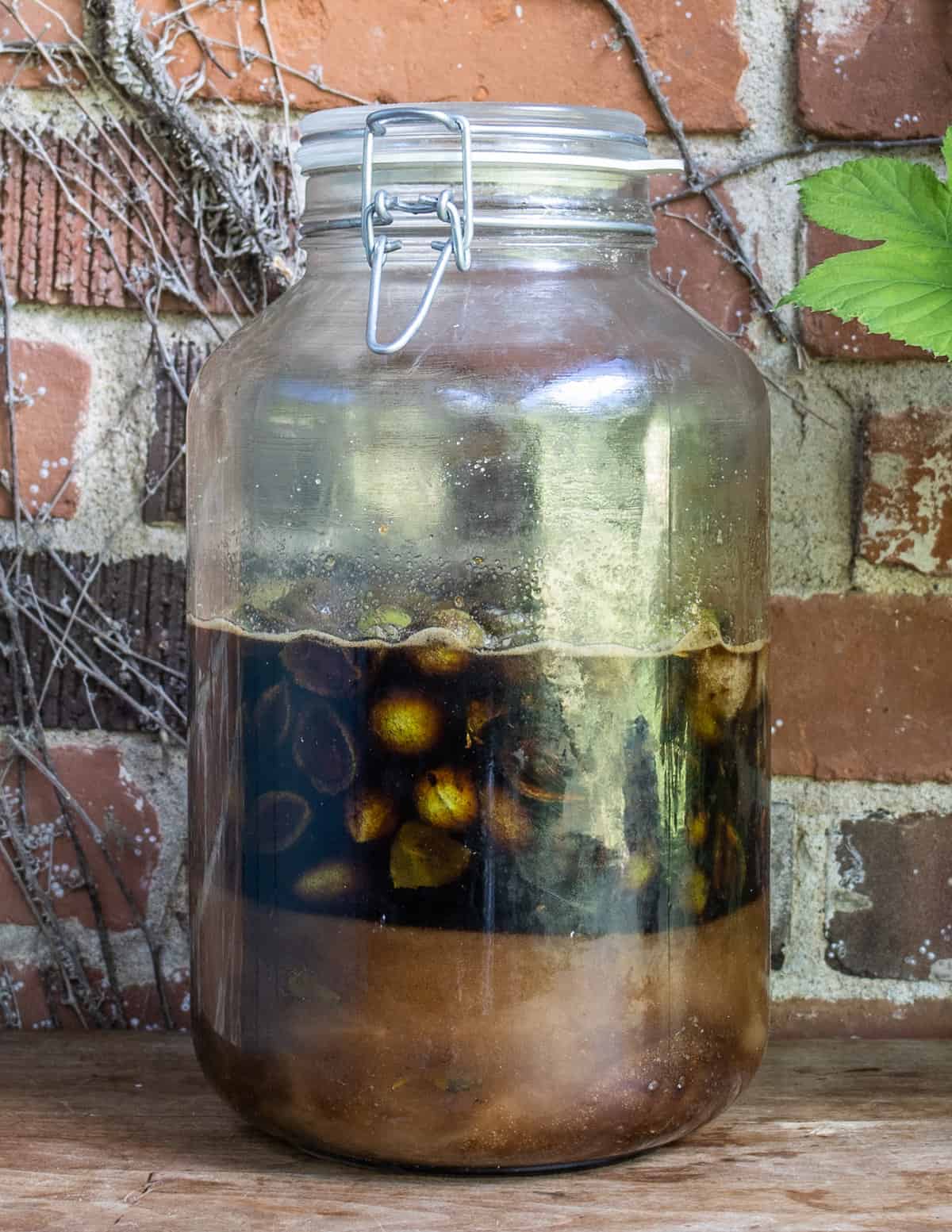
Maceration Magic
The process is exactly the same as for Mugolio. Take your green walnuts, cut them in half, then mix them with twice their weight in good, unbleached sugar, and put them in a container, preferably a glass mason jar so you can watch the show.
After only a day or two, the alchemy begins as the sugar coaxes out what seems an impossible rush of natural water from the green walnuts.
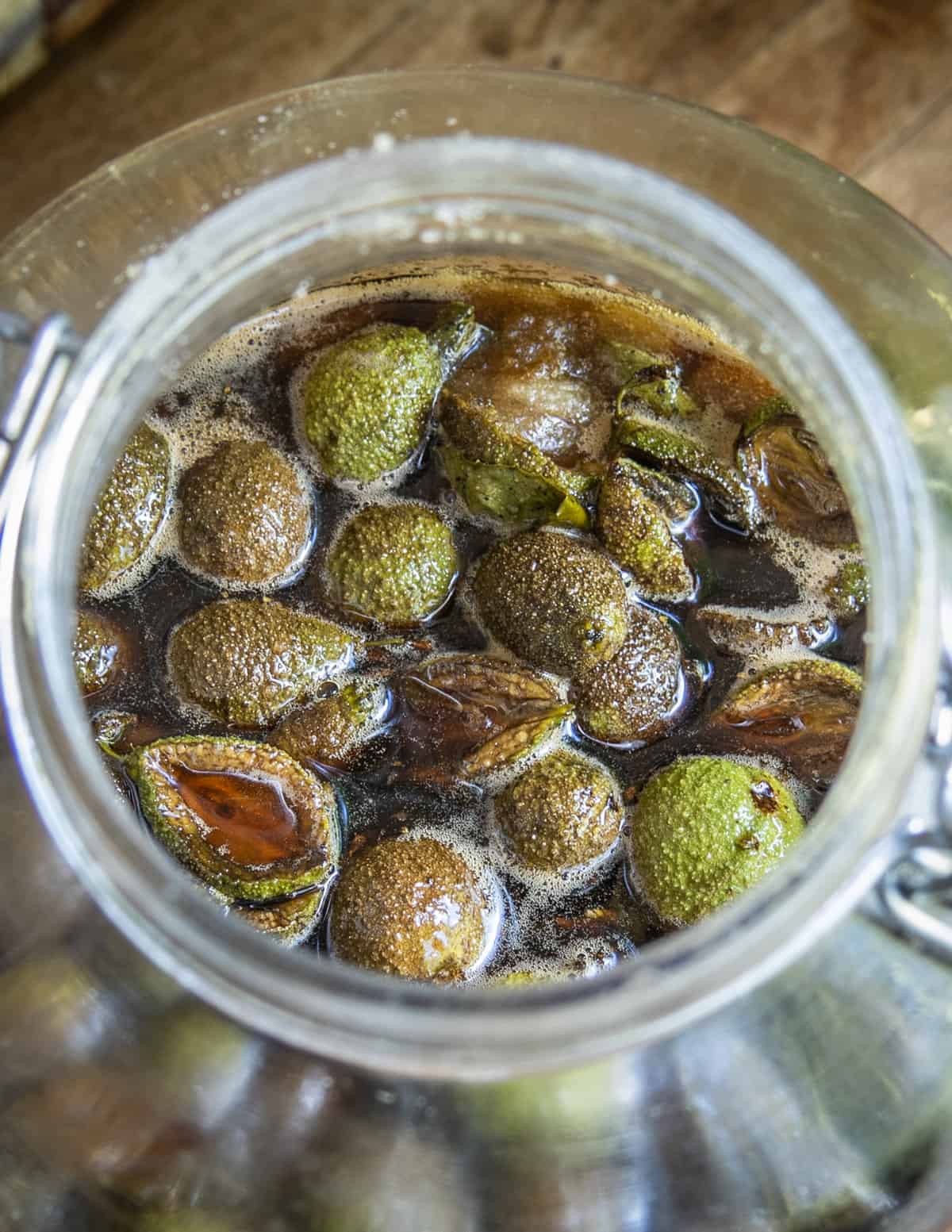
After just a few days, the walnuts will be swimming in liquid, and there will be visible bubbling as the mixture begins to ferment and bubble, pressurizing the contents of the jar and letting out a satisfying hiss when the lid is opened.
After at least 30 days, you scrape out the sugary walnut sludge into a pot, bring it to a boil, then strain, discard the walnuts, and bottle the syrup. Ah Viola.
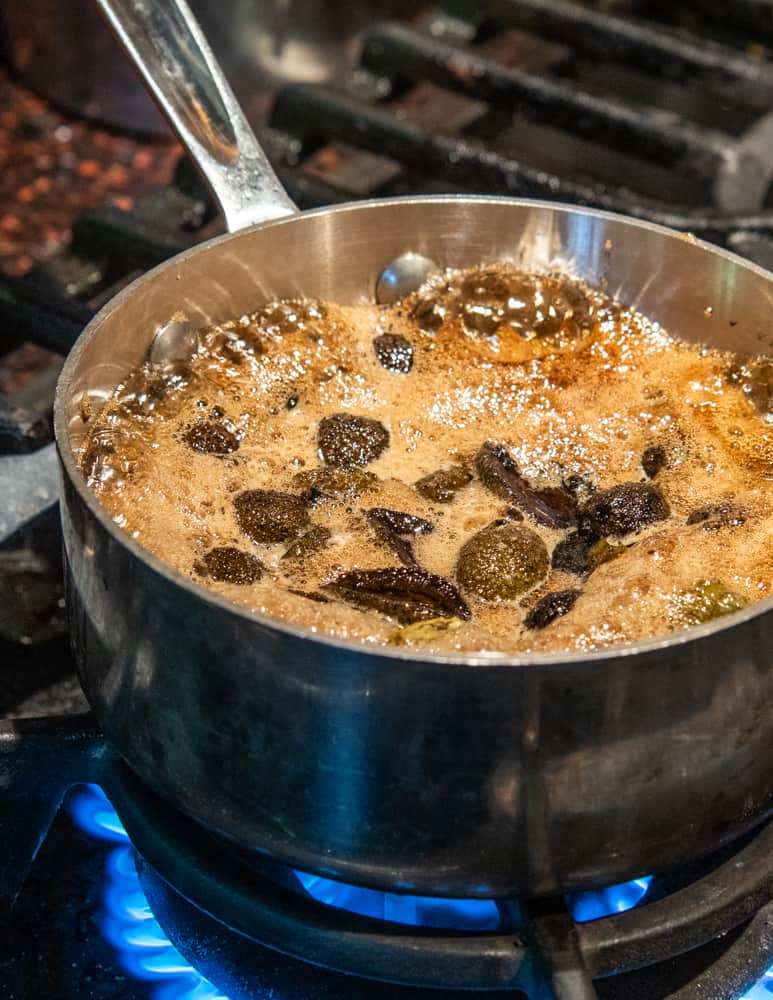
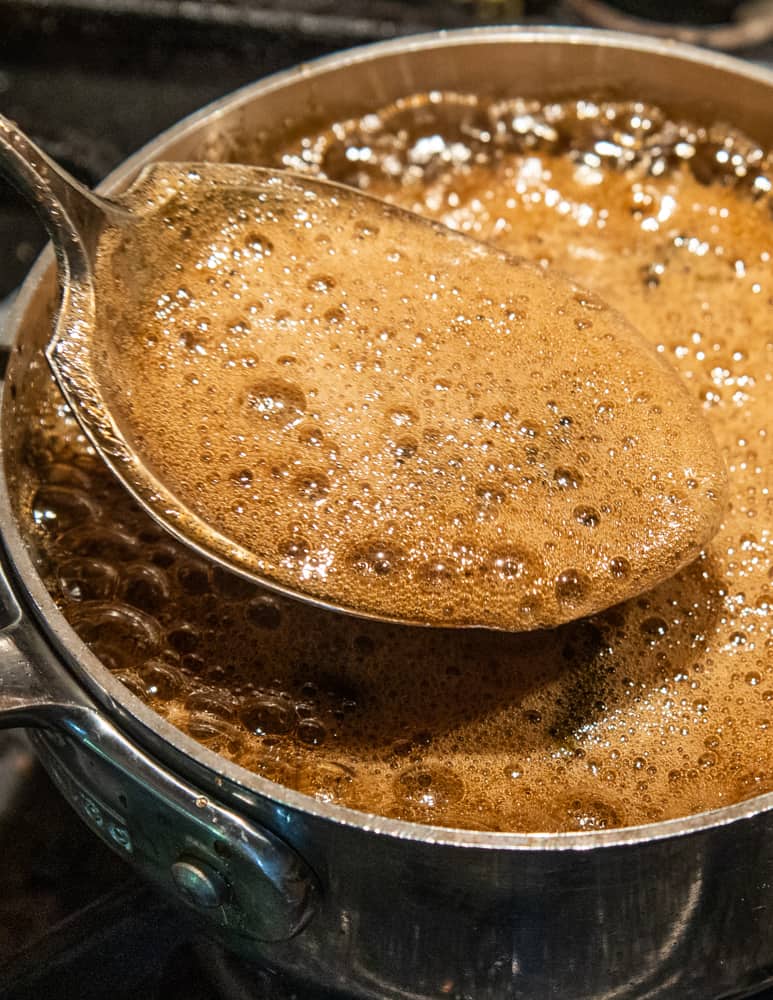
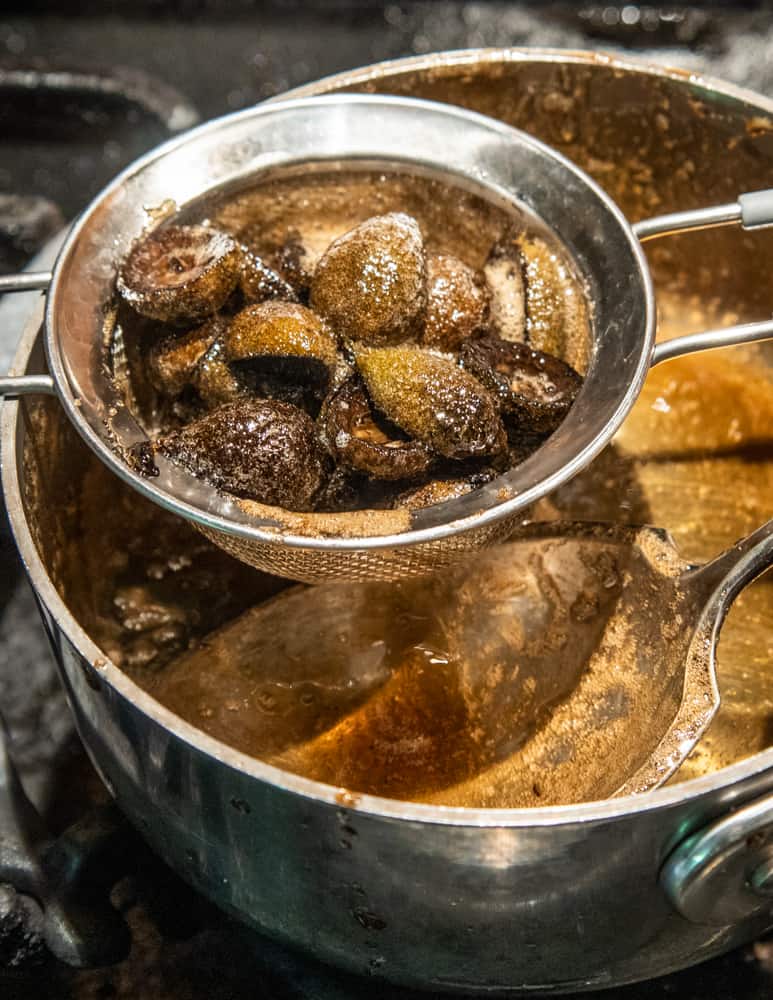
How to use it
While the flavor is not as intense as mugolio, it's still fun. You could use the finished green walnut molasses anywhere you would use maple syrup, and it loves yogurt and creamy soft cheeses. I've also used it for baking in things like granola, which worked, and gave it a darker color.
There's one thing I'm excited about more than any other though, and it's part of what was pushing me to make this is and taste the finished product a bit early. If you follow me on Instagram and Facebook, you may be familiar with the Ida Graves project-my collaboration with a local distillery in Alexandria Minnesota to create distinctly Midwestern liquors flavored with wild herbs and ingredients I harvest.
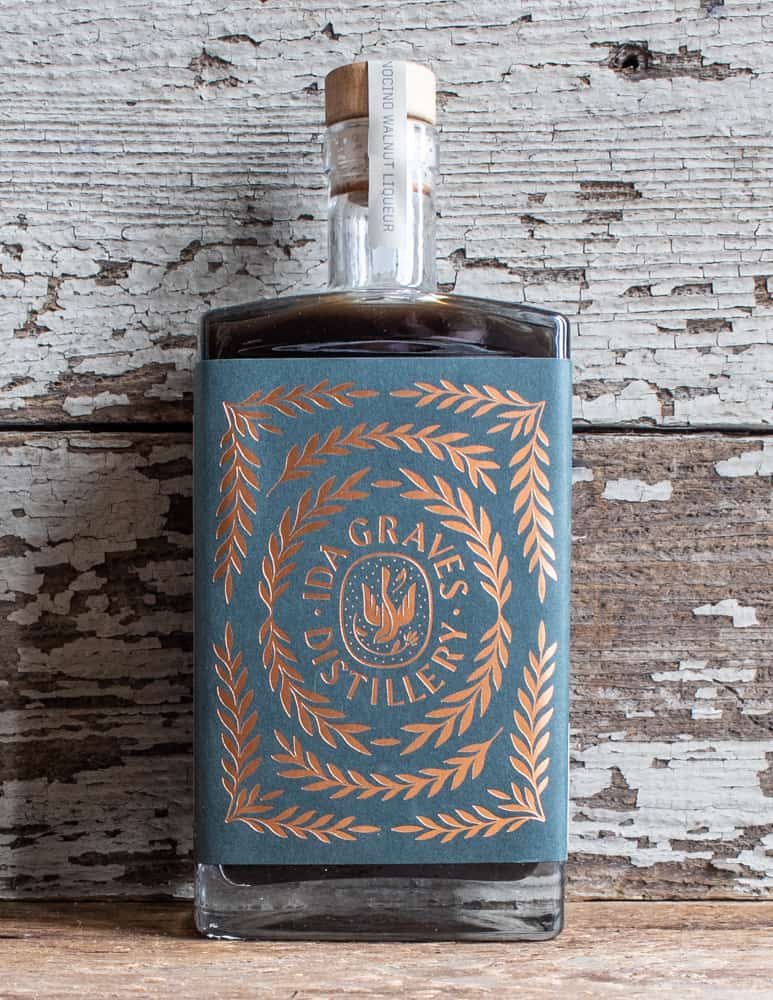
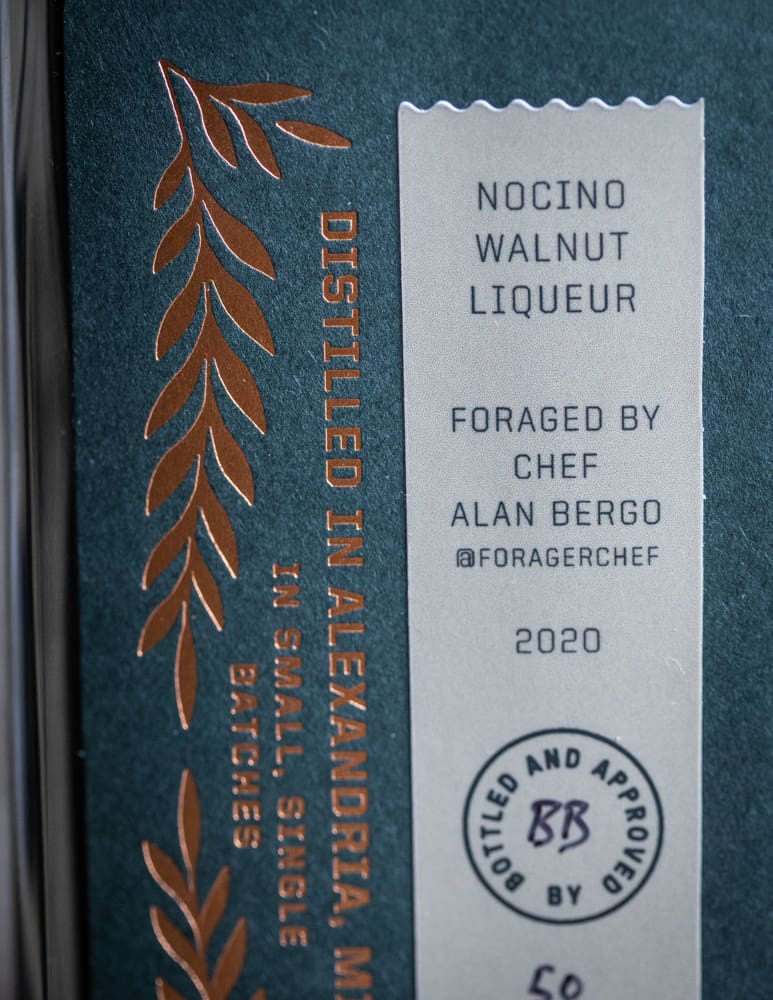
This will be our second year making wild spirits, and, as you may have guessed, nocino is one of them. One of my old chefs from Italy would sweeten nocino with white sugar, I've come to prefer maple syrup over the years.
The scheme I'm hatching here though, is that using black walnut honey to flavor nocino might just be the ultimate version: a study in the flavor of black walnuts only the forest can provide.
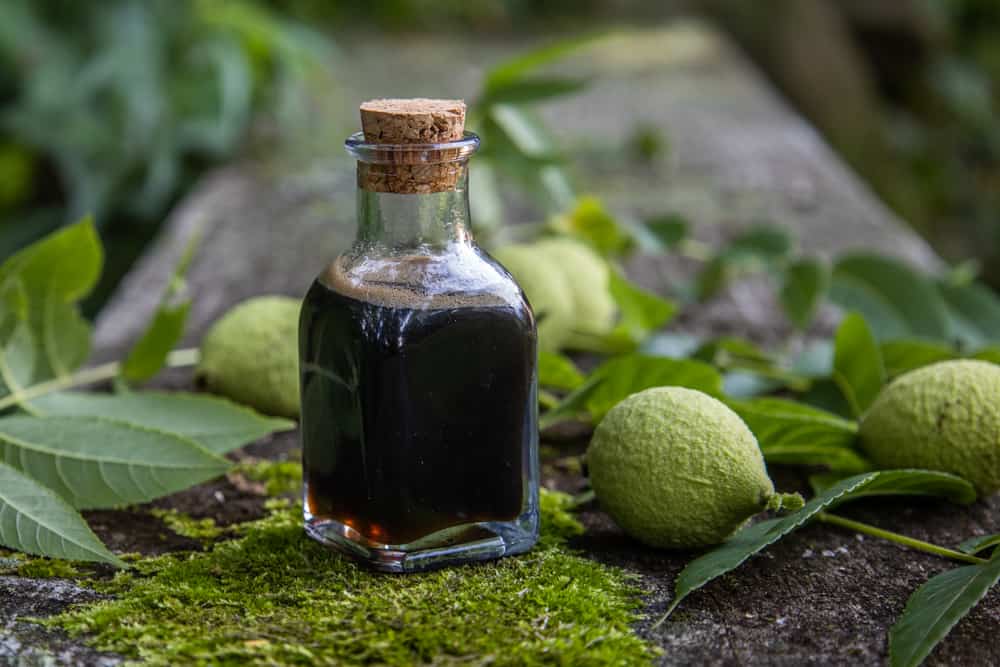
Black Walnut Molasses
Equipment
- 1 Mason jars you'll need two quart jars or one half gallon jar
Ingredients
- 1 lb (roughly 15-22) young unripe black walnuts or butternuts soft enough that they can be cut through with a knife
- 2 lb Brown sugar or Turbinado sugar
Instructions
Harvest and Prep the Nuts
- Harvest unripe black walnuts directly from the tree. Younger is best, smaller than a ping pong ball. Older, more round nuts may be more tannic.
- While it may be tempting to harvest walnuts that have already fallen, you will want to cut some of them in half to make sure they're pearly white and clean on the inside, without any spotting or deterioration. Wash the walnuts and reserve.
- Wearing gloves, cut the walnuts in half using a heavy knife on a cutting board that won't stain. Older recipes often mention crushing or pounding the unripe nuts, which you could also do, but beware of splattering juice.
- Mix the walnut with the sugar, then pack into a container that can accomodate the entire mixture. For the amount listed, you would want a half gallon mason jar.
Maceration
- Allow the walnut-sugar mixture to sit at room temperature or outside for at least 30 days, and up to a few months, opening the jar occasionally to release carbon dioxide as the mixture will ferment. Shake or stir it occasionally to coat the nuts in the fermenting syrup and help prevent mold.
Boiling, straining and storing
- After at least 30 days, scrape the sugary walnut mixture into a non-reactive sauce pot with high sides. On high heat, bring the mixture to a simmer to melt the syrup, turn the heat off and remove the walnuts using a slotted spoon and discard.
Finishing and Jarring
- Bring the syrup back to a brisk simmer, turn off the heat and wait a minute for the foam to settle, skim off the foam. Pour the piping hot syrup into the jars leaving ½ inch of headspace, screw on the lids tightly.
- The cooking process should take about 10 minutes. You're only melting the syrup and getting it hot, not reducing it.
- Process the jars in a water bath, 10 minutes per pint. Some people simply turn the jars upside down and allow to cool and seal. The syrup will last for years and doesn't need to be refrigerated until it's opened. It can be a little tannic at first but mellows as it ages.

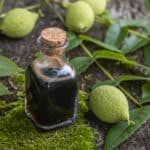
Meri D’Ulizia
Good morning alan, I put the nuts and sugar to ferment on June 11th, then I forgot until now. no mold. Can I finish the process or botulinum or other bacteria could have contaminated it? Thanks for the answer. Meri
Alan Bergo
No you're fine. Remember that botulism is killed by cooking, so go ahead and proceed, especially if you didn't get any mold, which can harm the flavor.
Rachel Petrie-Stahlmann
Hello! I was super excited for this, but I think there is a step missing in the Boiling & Straining section of the recipe. It says to bring it to a boil, then strain out the walnuts, but it doesn’t say anything about stopping the boil or how long you should let it boil and/or simmer. Unfortunately, mine boiled too long, burned, & solidified. 🙁 Going to have to try it again next year, I guess.
Alan Bergo
You're making it too complicated. Just bring the syrup to a simmer, remove the walnuts and pour the hot syrup into jars.
Angela Squire
Hi, I have a jar of Nocino just about ready (30 days+) for the addition of syrup, also a jar of the molasses as per your recipe at 30 days maceration. Once the molasses has been boiled pre bottling, can I use it as the syrup for the Nocino? I've never made either before this year, If so, what would the ratio be nocino:molasses? I made one and a half quantity of Nocino, so used that amount of alcohol with all other ingredients in ratio..
Your advice would be much appreciated. Thank you.
Angela (In Kent, England)
Alan Bergo
Just add it, a couple spoonfuls at a time, mixing well until it tastes good to you. Italians I've spoken to rarely use recipes. It shouldn't be overly sweet. If it's your first time making it, I'd add maple syrup or sugar.
Angela Squire
Thank you.XX
montympls
Does the glass jar, clear or amber, imoact the process?
Alan Bergo
Amber is better for most things but most people don't use them. All will work.
Vikki
I’ve been pickling walnuts since we bought our house here in Brittany France 12 yrs now I remember my Dad doing it many years ago. I’m so glad I found you as we have so many nuts from our 2 trees this year I have made the wine and just boiled up the syrup it looks good and look forward using it making my muesli and on pancakes . Look forward to making more next year as maple syrup is rocket here in price! Thank you for sharing your wonderful recipes
Alan Bergo
Thanks Vikki.
Tiffany
Question on residual sugar - my nuts have been macerating for a month, the nuts are floating, and there is obvious, happy bubbling going on. However, it's clear there's a solid 2" of sugar in the bottle of my 1 gallon jar. What is the best course of action for me from here?
Alan Bergo
It's fine, not all of the sugar will dissolve during the maceration. Once you cook it everything will melt and become homogenous.
Tiffany
That's what I supposed but wanted to confirm - thank you for answering!
Matt
Hi Alan,
Thank you for this recipe! I made it and processed the molasses earlier this fall, from black walnuts off a downed limb. When I tasted the finished molasses, it had a bitter after taste. Could this be tannins? I'm worried to use the molasses I've made (about a gallon), because I'm wondering about juglones, which I just learned is inedible/toxic. Does the maceration / brown sugar fermentation get rid of the juglone compound in black walnut molasses? Thank you again!
Alan Bergo
There will be some tannins, but nothing close to an alcohol extraction. They will mellow a bit over time too-so taste it now. I can't speak to the juglones from a scientific perspective, but a lot of people have made this, and at least 3-4 people I know of now sell it at farmers markets. I've served it to people for a few years now and have never had any issues. You consume such a small amount in dishes you would use it in that, even if there's still juglone in it I really see it as a non-issue. Cooking also makes many things safe that might otherwise give you an upset stomach too.
Patrick
After sitting overnight, quite a bit of liquid has manifested in the jar--but there's still a significant amount of solid sugar at the bottom that refuses to dissolve no matter how much I shake it. How long might it take for *all* of the available liquid to be drawn out of the walnuts? In other words: at what point should I stop waiting for the walnuts to release more liquid, and just add some extra water so that the remaining sugar can dissolve?
Alan Bergo
The sugar will not completely dissolve until you heat it. Same as mugolio.
tom
two more things
how long will the fermenting going on? Mine stopped (or slowed very much down) after a couple of days at least when bubbles count as fermenting.
And do you wash the cones to get rid of the resin?
Alan Bergo
Tom, It's hard for me to know what you're talking about when you say cones on a post about walnuts. Can you be more specific here ?
tom
Sorry, about the confusion. You mentioned that making a syrup of green walnuts is similar to making syrup of pine cones and combined my questions here in this post. I have pine cones fermenting (which basically stopped now according to the bubbling) and wonder how long they should ferment and if walnuts will ferment as long as pine cones.
tom
Hello,
is there a reason for the 2:1 ratio? Can I use less sugar - like 1:2 as long as the nuts/cones/needles are covered?
Alan Bergo
No, you can't use less sugar, the proportions are dialed in here.
tom
I was curious because if I use the proportions suggested I have quite a large amount of sugar crystals on the bottom of my glass since the cones don't provide enough liquid for it to go into solution and wonder if I did something wrong.
Jonathan
I just came across this recipe today while looking for walnut syrups. We have a couple of many decade old English Walnuts in our yard, and have been trying several different recipes. Pickled Walnuts, Nocino, and even a Victorian-era green walnut sauce that came out tasting almost exactly like A-1 are already in the bag. This sounds like a great one to try. Just curious on a couple of things though - does the fermenting use up all the residual sugar, or could the resulting syrup be used in lieu of maple syrup in an acerglyn? If I was to scale this up to aiming for around a pound of finished syrup, what would the quantities of nuts needed be? My acerglyn recipe is 1 lb maple syrup to 2 lbs honey to a gallon of finished product. Can't wait to try this!
Alan Bergo
Jonathan, so the finished product will make roughly the weight of sugar into syrup, which will be roughly the consistency of honey, depending on how much you cook it down. To really be precise, you could measure the brix level like people do when cooking down maple. I'd start by making a little more than you need just to be safe.
Sarah
I just realized that I had made a batch of this and forgotten about it- the walnuts have been in the sugar for 5 months now. It smells wonderful, with lots of aroma, but the tannins are strong- if I let it sit long enough, will it mellow? Or should I toss this batch and wait until next summer?
Alan Bergo
I've made a bunch and still haven't tasted tannins in any of my batches. If it's too strong for you, I'd suggest making another batch next year with very young nuts.
Kerensa DeMars
I just finished the syrup that had been fermenting since late July. I have a black walnut tree in my backyard and harvested the nuts directly from the tree when they were still (barely) soft enough to cut in half. The finished syrup is delicious and will make a perfect addition to holiday gift baskets. Thanks for the wonderful recipe and guide.
Alan Bergo
Glad it worked for you Kerensa.
COURTNEY SCHEIDERICH
I was wondering if there is any reason I can't do this with my Nocino walnuts after I strain my Nocino? I only found your recipe after I committed all of my green walnuts to Nocino this year. I have added some sugar to one jar of walnuts and it was black and liquid the next day. Thanks in advance!!
Alan Bergo
No, you cannot use the nuts to make walnut honey. Their goodness has been transferred to the liquor.
COURTNEY SCHEIDERICH
Thanks for your response, Alan! I wanted to let you know that I had already started the process so I saw it through to the end. I left it to sit about 3 weeks. There was a little sugar at the bottom of the jar (approx 1-2 Tbsp in a full quart jar) that never incorporated. It never developed any mold. I strained it and brought it to a boil, then simmered briefly to reduce, then jarred. It's delicious. It never fermented but I would still say that it's a great tasting syrup and a way to get just a little more from your walnuts before discarding. Happy New Year!
Doug
This is extremely tasty!
Note that when making it, I needed to open up the jars to get all the sugar off the bottom of the jar. There was probably not enough water in the walnuts. For next time, is it OK to add a bit of water while it's macerating, to get all the sugar to dissolve? Or just add it at the end?
One final question -- can the finished product live outside the fridge (like honey) for months? Or should it be refrigerated? (You said it was very stable, but I'm not sure what this means.)
Thanks again!
Alan Bergo
Yes it's fine to add a splash of water while macerating the nuts and sugar. As I mention, the syrup will last for a very long time after you put it in the mason jars. It does not need to be refrigerated.
Doug
Thanks! My yield was a bit low (just over 3 cups), so maybe I should have added more water. A little sugar has accumulated on the bottom of the jar, which isn't a big deal.
By the way, have you tried this blended into whipped cream on top of nannyberry pudding? Mmm... (Same goes for the sweet liquid from the preserved black walnuts recipe in your book.)
Jacqueline senez
Your information is AMAZING and I'm so grateful to have found you online!! I just started researching about harvesting cracking and using black walnuts. I have decided to try many of your different ideas and recipes. It is mid oct now and I'm in Massachusetts. There are many walnuts on the ground in different states of physical being, soft, hard, green, yellow, brown, some cracked open, some no visible damage some have lots of visible damage. I'd like to try drying some this year and next summer start picking green ones from the tree. Is it safe to use ones off the ground? I've picked some recently green from tree also but they are small and hard should I let them soften and use your boot and glove method and dry the ones that sink only? I know they are black walnuts as the stain is impossible to miss. Thanks Jacqueline
Alan Bergo
Remove the hulls, then wash and dry as directed. For all of them.
Jacqui
Hi Jacqueline,
I collect (ripe) walnut ONLY from the ground. I generally wait till the husk has blackened and partly rotted away to reduce the work, and if I can I will squash them under my shoe to remove the husk before I pick them up. But that is because the squirrels here aren't serious competitors for the black walnuts since they prefer the European ones (that are SO much easier to crack). In fact it seems to me that only the crows are using these black walnuts and they place them on the road for cars to drive on to get them opened. If the walnuts are still on your tree I would suspect that they are not really ripe yet and I would wait for them to fall.
Jacqui
I am tossing in my salt late in the process because ... I just bottled mine that had been steeping since June. Yup ... too much going on my life...
First, I also had mould that showed up about a month into the steeping but I lacto-ferment a lot so it did not worry me. I fitted a piece of baking paper into the top of the jar and added an empty jar to make sure everything important was covered in liquid. Today when I removed the baking paper there was a sort of rim of mould just like I get on my pickles. It's probably a (totally harmless) Penicillium, the most common fungus in all of our kitchens and able to live under all sorts of extreme conditions.
So, that's my contribution to the mould issue - present but not a problem in my opinion.
Now to the tannins.
Different people have different sensitivities to tannins. I cannot eat the persimmons from the tree in our garden that my husband happily eats in huge numbers (but he is way more sensitive to bitter tastes than I am).
So, is my syrup tannic? For me, yes. Is it too tannic to be pleasant? No, but I will consider its tannicity when deciding how I use it. And I just fed a spoonful to my husband and he said it is "not tannic at all", which is clearly not true for my mouth.
So I suspect that the comments about how tannic it is probably depends more on the taster than the recipe or the walnuts.
Ruth
I'd like to give this a try with pine cones. Should I harvest them when green and closed or brown and open? I'm finishing my first batch of walnut honey today. Thank you for sharing your experiences with wild culinary experimentation, it has opened up a new world of discovery for me.
Alan Bergo
Pine cones MUST be harvested green for this or it will not work.
Caitlin
Just finished boiling off a batch (fermented for 42 days) and it still tastes quite tannic. Any suggestions? Would I have any luck simply adding more sugar to the mix and boiling again to dissolve? Thanks!
Alan Bergo
Hmm. Thanks for letting me know. All I can say is that I have 2 1/2 gal batches going at about 60 days just to test that, and they’re not tannic. The distillery I work with is making multiple gallons to flavor our 300 bottles of nocino, and I have a good number of friends who’ve made it now and no one has mentioned it. I’ll keep my eyes peeled for more accounts of it. Thx
Nadia
I used walnuts that were a little past the point of cutting- and let it sit about a month too long. and it is really bitter- almost burns your throat. I figure the walnuts were too old. I made it to add to the Nocino recipe. I went ahead and mixed it in with the nocino and will put in the basement for a year and see if it mellows out with time. Love Flora and am excited for the next installment
Alan Bergo
Good to know Nadia. Yes I only use ones that are still tender and easy to cut here. Once it ages in the nocino that should relax. Glad you're enjoying the book.
Pete
I made a batch this summer out of butternut... and took absolutely 0 notes... that was still quite bitter as of New Years. I'll try again next year with the same tree, but for now that's another data point for possible bitterness after fermentation. Perhaps only if the recipe is followed carelessly as was likely the case in my midsummer fervor.
Alan Bergo
All I can say is that mine was made from very young black walnuts. I would also pay attention to the maceration time, leaving the young nuts in the syrup for a longer than I did might make it bitter. As it's experimental, there's probably a lot of variables here. There are still some tannins in mine, but it's nothing compared to the astringency of a fresh black walnut. I just made a batch of extra dark granola with some of mine and it's pretty darn good.
Sarah
I forgot about my jar of green walnut honey and two of the walnuts have some fuzzy white mold growing on the top- can I discard them and still use the syrup? Or toss the batch?
Alan Bergo
Sarah, yes, it needs to be stirred regularly, particularly if your walnut were large, which can mean they may pop out above the liquid, exposing them to air and all of the bacteria it contains. This stuff is super stable though, so, proceeding with caution, I would pick off any moldy nuts, skim the liquid, put it in a pot, bring it to a simmer, strain it, and taste. If it tastes good to you, keep it. Sugar and the natural composition of black walnuts themselves are very, very inhospitable to bacteria, especially after the fermentation process which itself lowers the pH.
Tanya Kelly-Hadley
Just finished mine up (fermenting). The initial flavor is amazing but I'm getting a tangy after taste. Could I have possibly done something wrong? Over cooked? Not enough sweetener? I used brown sugar in my mix, could that be it? Or is this normal? Obviously, my first try. 🙂
Alan Bergo
Tangy could be from the fermentation. I haven't tasted any in mine.